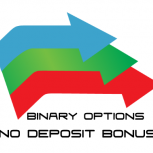Welcome to the new Traders Laboratory! Please bear with us as we finish the migration over the next few days. If you find any issues, want to leave feedback, get in touch with us, or offer suggestions please post to the Support forum here.
-
Welcome Guests
Welcome. You are currently viewing the forum as a guest which does not give you access to all the great features at Traders Laboratory such as interacting with members, access to all forums, downloading attachments, and eligibility to win free giveaways. Registration is fast, simple and absolutely free. Create a FREE Traders Laboratory account here.
Introduce Yourself Here - Don't Be Shy!!
By
trading4life, in Beginners Forum
- automated trading
- beginner
- bethlehem pa
- binary options
- binary options trading
- capitalization
- charlie mckelvey
- commodity stock tips
- commodity tips
- contrarian positions
- currencies
- day trading
- daytrading
- equity tips
- es-emini
- etf
- finance
- first day
- foreign currency
- forex
- forex accounts
- forex analysis
- forex forecasting
- forex trading
- forex webinar
- fundamentals
- furniture
- futures
- futures trading course
- international trade
- intro
- introduce
- introduce yourself
- introducing myself
- introduction
- investment
- java trading at
- learn forex trading
- london
- market analysis
- market forecasting
- markets
- momentum postions
- money
- money trader
- money trading
- new member
- newbie
- news
- options stocks
- philippines
- price
- price action
- price action trading
- real time
- sierra chart
- start
- startegy
- starting
- starts
- stock analysis
- stock education
- stock market beginners
- stock tips
- stocks and options
- stocks to watch
- system
- trader
- traders lab
- trading
- trading analysis
- trading live
- trading plan
- trading strategy
- univeristy of texas
- vinayak trader
- volatility
- volume


